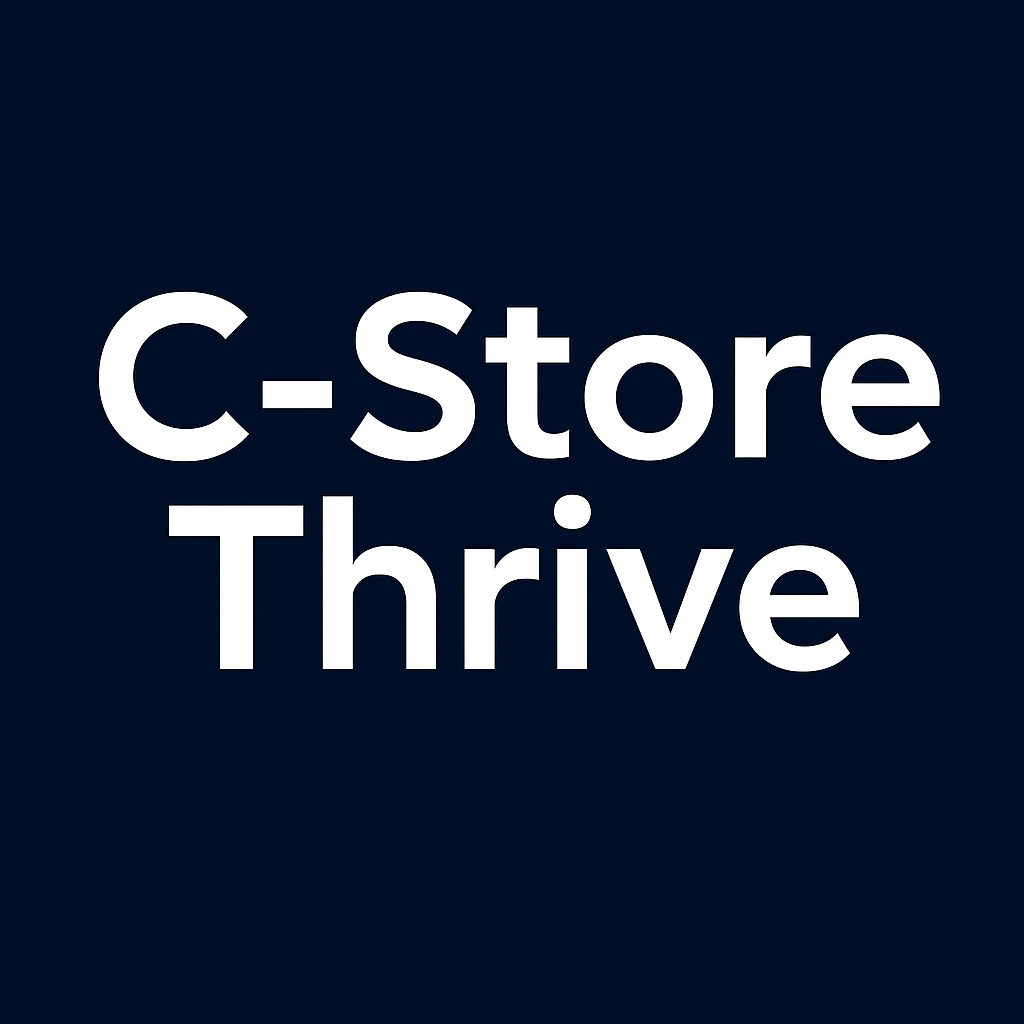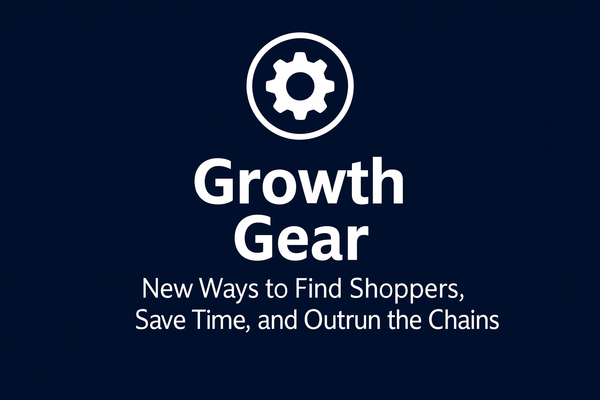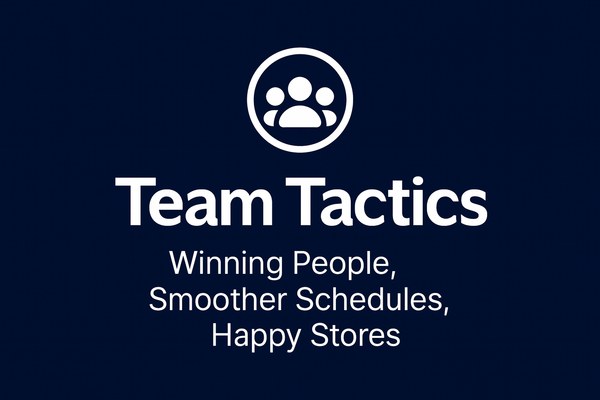Beyond Transaction: How Personalized Service Builds Unbreakable Convenience Store Customer Loyalty
Personalized service increases customer lifetime value 40-60% and reduces acquisition costs 50% through relationship-building connections.

Acquiring new convenience store customers costs five to seven times more than retaining existing ones, according to Harvard Business Review research, yet most operators focus their energy on attracting new traffic rather than deepening relationships with current customers. This approach misses a crucial opportunity: personalized service can increase customer lifetime value by 40-60% while reducing customer acquisition costs by up to 50%, according to McKinsey personalization research. The difference between transaction-focused service and relationship-building personalization often determines whether independent convenience stores thrive or struggle against larger chain competitors.
Jeff Bezos' distinction between "motion" and "movement" in Amazon meetings applies directly to convenience store customer service strategy. Motion represents serving customers efficiently—processing transactions quickly, maintaining clean facilities, and ensuring product availability. Movement represents serving customers meaningfully—creating personalized experiences that build lasting emotional connections and drive repeat business. While both approaches have value, only movement toward personalized service creates the customer loyalty that generates sustainable competitive advantages.
Defining Personalized Service in Convenience Store Context
Personalized service in convenience stores extends far beyond basic customer service training to encompass individualized experiences that recognize customers as unique individuals with specific preferences, needs, and shopping patterns. Unlike generic "greeting every customer" approaches common in corporate chain training, personalized service involves remembering customer names, anticipating their usual purchases, and tailoring interactions based on previous visit patterns, according to retail customer experience research from PAR Technology.
The foundation of personalized convenience store service lies in customer recognition systems—both technological and human—that capture and utilize customer preference data to enhance each interaction. When a customer consistently purchases morning coffee and a breakfast sandwich, personalized service means having their order ready, suggesting complementary items they might enjoy, or notifying them about relevant promotional offers that align with their purchase history.
Personalized service differs fundamentally from standardized customer service protocols by adapting to individual customer contexts rather than applying uniform approaches. According to convenience store marketing research from Paytronix, successful personalization involves understanding customer motivations: the busy commuter who values speed and efficiency receives different service than the local regular who enjoys conversation and community connection.
The approach requires shifting from transaction-focused interactions to relationship-building conversations that create emotional connections beyond the purchase moment. When staff members remember that a customer recently mentioned their child's baseball game or ask about their recovery from illness, these personal touchpoints transform routine transactions into meaningful community interactions that competitors cannot easily replicate.
Modern personalized service integrates both human relationships and technological capabilities to create seamless, individualized experiences. Point-of-sale systems, loyalty programs, and customer relationship management tools provide data foundation, while staff training and cultural development ensure that technological insights translate into authentic human connections that build lasting customer loyalty.
Key Components of Personalized Service Systems
Customer Recognition and Preference Memory
Effective personalized service requires systematic customer recognition that extends beyond remembering names to understanding purchase patterns, timing preferences, and individual needs. Research from TARGIT shows that convenience stores using customer recognition systems achieve 30% higher visit frequency among identified customers compared to anonymous transaction patterns, demonstrating the power of personal acknowledgment in building loyalty.
The recognition system should capture both explicit preferences—customers directly expressing product favorites or service requests—and implicit patterns derived from purchase history and visit timing. When a customer consistently purchases energy drinks during afternoon shifts, this pattern enables staff to suggest new energy drink varieties or offer relevant promotional discounts that align with established preferences.
Advanced customer recognition involves understanding context beyond products to include service preferences, communication styles, and individual circumstances that affect shopping behavior. Some customers appreciate detailed product recommendations and extended conversations, while others prefer efficient, minimal-interaction service that respects their time constraints and personal boundaries.
Tailored Product Recommendations and Service Approaches
Personalized product recommendations transform convenience stores from passive product displayers into active consultants who help customers discover items that enhance their experience and meet evolving needs. According to loyalty program research from Cenex, personalized recommendations increase average transaction size by 15-25% while improving customer satisfaction scores significantly.
The recommendation system should consider customer lifestyle patterns, seasonal preferences, and complementary product opportunities that create value rather than simply pushing high-margin items. When a customer regularly purchases coffee, personalized recommendations might include seasonal beverage varieties, premium coffee options, or breakfast items that complement their morning routine.
Service approach personalization involves adapting communication style, service speed, and interaction depth to match individual customer preferences discovered through observation and direct feedback. Staff members trained in personalization recognize social cues that indicate whether customers want engaging conversation or efficient, quiet service that respects their privacy or time pressure.
Relationship-Building Techniques and Community Connection
Personalized service creates community connections that transform convenience stores from transaction locations into neighborhood gathering places where customers feel welcomed and valued. According to customer retention research from Dover Fueling Solutions, convenience stores that successfully build community connections achieve customer retention rates 40-50% higher than transaction-focused competitors.
The relationship-building approach involves remembering and inquiring about customer life events, local community activities, and shared interests that create personal bonds beyond commercial transactions. When staff members remember that a regular customer coaches local youth sports or recently started a new job, these personal connections create emotional attachments that transcend price competition.
Community connection strategies include participating in local events, supporting neighborhood causes, and creating in-store environments that encourage social interaction among customers who share common interests or geographic proximity. Stores that become community hubs generate word-of-mouth marketing and customer advocacy that attracts new visitors through personal recommendations rather than advertising expenditures.
Emotional Connection Development Beyond Transactions
The most powerful personalized service creates emotional connections that make customers feel genuinely cared for and valued as individuals rather than revenue sources. Research from customer experience specialists shows that emotionally connected customers demonstrate 2.3 times higher lifetime value compared to customers who maintain purely transactional relationships with businesses.
Emotional connection development requires authentic interest in customer well-being, celebration of their successes, and support during challenging times that demonstrates genuine care rather than calculated sales strategies. When customers share personal news—job promotions, family milestones, health challenges—staff responses that show authentic concern and interest create bonds that competitors cannot easily break.
The approach involves training staff to recognize opportunities for meaningful connection while maintaining appropriate professional boundaries that respect customer privacy and comfort levels. Successful emotional connection feels natural and authentic rather than forced or overly familiar, requiring cultural development and ongoing coaching to execute effectively.
Competitive Advantages Through Personalized Service
Creating Customer Switching Costs Beyond Price Competition
Personalized service creates psychological and practical switching costs that make customers reluctant to change stores even when competitors offer lower prices or greater convenience. According to customer loyalty research from McKinsey, customers receiving personalized experiences are 40% less likely to switch providers due to price differences compared to those receiving generic service approaches.
The switching cost effect occurs because personalized service creates unique value propositions that competitors cannot immediately replicate—staff members who know customer preferences, established routines that save time, and emotional connections that provide social value beyond product purchases. When customers have invested time and emotional energy developing relationships with store staff, switching to competitors requires rebuilding these relationships from scratch.
Personalized service also creates practical switching costs through customized service delivery that becomes increasingly valuable over time. Customers whose regular orders are anticipated and prepared, who receive personalized recommendations that consistently meet their needs, and who benefit from flexible service accommodations develop dependency on these conveniences that competitors cannot instantly provide.
Word-of-Mouth Marketing and Community Reputation
Customers receiving exceptional personalized service become active advocates who generate new business through authentic recommendations to friends, family, and community members. Research from customer advocacy studies shows that satisfied customers who feel personally connected to businesses generate 3-5 times more referrals than those who receive standard service experiences.
The word-of-mouth effect proves particularly powerful in convenience store markets where community members frequently seek recommendations for reliable, trustworthy local businesses. Personal testimonials about friendly service, remembered preferences, and genuine care create credibility that paid advertising cannot match, especially among demographics skeptical of corporate marketing messages.
Community reputation built through personalized service creates competitive moats that protect market share during economic downturns, competitive price wars, and other market disruptions. Stores known for exceptional personal service maintain customer loyalty even when external pressures might otherwise drive customers to seek lower prices or different convenience options.
Enhanced Visit Frequency and Basket Size Growth
Personalized service drives both increased visit frequency and higher average transaction values as customers develop stronger emotional connections and receive value-added recommendations that enhance their shopping experience. According to convenience store loyalty research from PDI Technologies, customers receiving personalized service visit 30% more frequently and spend an average of 25% more per transaction compared to anonymous customers.
The frequency increase occurs because personalized service transforms routine shopping from necessary chores into pleasant social interactions that customers actively anticipate and enjoy. When convenience store visits provide social value through meaningful conversations and personal attention, customers find additional reasons to visit beyond immediate product needs.
Basket size growth results from trusted recommendations, cross-selling opportunities based on known preferences, and increased customer comfort with trying new products suggested by knowledgeable staff members who understand their tastes and needs. Personalized recommendations feel helpful rather than sales-focused, creating customer receptivity to suggestions that increase transaction values.
Building Community Connections and Local Market Position
Convenience stores excelling in personalized service often become integral parts of their local communities, serving as informal gathering places where neighbors connect and local information circulates. This community hub status creates competitive advantages that chain competitors struggle to replicate due to their standardized operational approaches and frequent staff turnover.
The community connection advantage extends beyond individual customer relationships to encompass partnerships with local organizations, support for community events, and participation in neighborhood activities that reinforce the store's local identity and commitment. Community-connected stores benefit from local loyalty, favorable word-of-mouth, and resistance to chain competition that cannot demonstrate comparable community investment.
Local market positioning through personalized service creates unique competitive advantages in markets where residents value community connection and prefer supporting businesses that contribute to neighborhood character and social fabric. This positioning proves particularly valuable during economic challenges when community members actively choose to support local businesses rather than impersonal chain alternatives.
Practical Applications for Implementation
Developing Customer Recognition Systems and Processes
Successful customer recognition begins with systematic approaches to capturing and utilizing customer information that balances technological capabilities with human relationship skills. Modern point-of-sale systems, loyalty programs, and customer relationship management tools provide data foundation, but effective implementation requires staff training and cultural development that ensures technology enhances rather than replaces authentic human connections.
The recognition system should capture customer names, purchase preferences, visit patterns, and personal information shared during conversations to create comprehensive customer profiles that enable personalized service delivery. According to retail technology research from PAR Technology, stores using integrated customer recognition systems achieve 40% higher customer satisfaction scores compared to those relying solely on generic service approaches.
Implementation requires establishing procedures for recording, sharing, and updating customer information across all staff members so that personalized service continues consistently regardless of which employee serves specific customers during different shifts. Regular staff meetings should include customer recognition updates, preference changes, and service opportunities that ensure team coordination in delivering personalized experiences.
Staff Training for Personalized Interaction Techniques
Effective personalized service requires comprehensive staff training that develops both interpersonal skills and systematic approaches to customer relationship building. Training should cover conversation techniques, preference recognition, recommendation strategies, and boundary recognition that enables staff to create meaningful connections while maintaining professional appropriateness.
The training program should emphasize authentic interest in customer well-being rather than scripted interactions, teaching staff members to recognize natural conversation opportunities, remember important customer details, and respond appropriately to personal information customers choose to share. According to customer service research from Petrosoft, stores investing in comprehensive personalization training achieve 50% higher customer retention rates compared to those using generic customer service protocols.
Ongoing training should include role-playing exercises, customer feedback analysis, and best practice sharing that helps staff members refine their personalization techniques and adapt to different customer personality types and service preferences. Regular coaching and feedback help staff members develop confidence and skill in creating personalized experiences that feel natural and authentic.
Using Purchase Data to Anticipate Customer Needs
Purchase history analysis enables predictive service that anticipates customer needs before they express them, creating surprise and delight experiences that demonstrate exceptional attention and care. When data reveals that a customer purchases specific items on predictable schedules, staff can prepare recommendations, suggest restock timing, or offer promotional opportunities that align with anticipated needs.
The predictive approach should balance data insights with human intuition to avoid seeming overly invasive or mechanical in service delivery. According to customer data research from TARGIT, successful predictive personalization feels helpful and thoughtful rather than intrusive, requiring careful balance between demonstrating attention and respecting privacy boundaries.
Data utilization should extend beyond individual customers to identify broader patterns that inform inventory decisions, promotional timing, and service enhancements that benefit entire customer segments while maintaining individual personalization approaches. Understanding group preferences enables stores to optimize operations while continuing to deliver individualized experiences.
Creating Loyalty-Building Touchpoints and Measuring ROI
Systematic loyalty-building requires identifying and optimizing specific touchpoints throughout the customer experience where personalized service can create maximum impact and emotional connection. These touchpoints include greeting interactions, product recommendations, checkout conversations, follow-up communications, and problem resolution processes that collectively build customer relationships.
Each touchpoint should be designed to reinforce the customer's individual importance while advancing their relationship with the store and staff members. According to loyalty program research from Loyal-n-Save, stores that systematically optimize touchpoints for personalization achieve 60% higher customer lifetime value compared to those that apply personalization randomly or inconsistently.
Return on investment measurement should track both quantitative metrics—visit frequency, average transaction size, customer lifetime value—and qualitative indicators like customer feedback, staff satisfaction, and community reputation that reflect the broader impact of personalized service investments. Comprehensive measurement demonstrates the business value of personalization while identifying opportunities for continuous improvement.
Store owners who master personalized service create sustainable competitive advantages that transcend price competition and operational efficiency. While larger chains may offer lower prices, greater convenience, or more extensive product selection, they cannot easily replicate the authentic personal relationships and community connections that define exceptional independent convenience store experiences.
The investment in personalized service pays dividends through increased customer lifetime value, reduced marketing costs, enhanced community reputation, and staff satisfaction that creates positive operational cycles benefiting all stakeholders. As convenience store competition intensifies and customer expectations continue evolving, the ability to create meaningful personal connections becomes increasingly valuable for independent operators committed to long-term success.
The convenience store industry's continued evolution toward service-oriented operations makes personalized service mastery essential rather than optional. Operators who develop systematic approaches to customer recognition, staff training, and relationship building position themselves to compete effectively against larger chains while building the community connections that support sustained growth and profitability in an increasingly competitive marketplace.
This article is part of the weekly "Growth Gear" series from C-Store Thrive.
Found this analysis helpful? Share C-Store Thrive with fellow convenience store owners who want to build unbreakable customer loyalty.
Sources:
Harvard Business Review, McKinsey, PAR Technology, Paytronix, TARGIT, Cenex, Dover Fueling Solutions, PDI Technologies, Petrosoft, Loyal-n-Save, Customer Gauge, Atlantic Dominion Distributors, Convenience Store News, Mercatus, Nielsen IQ





